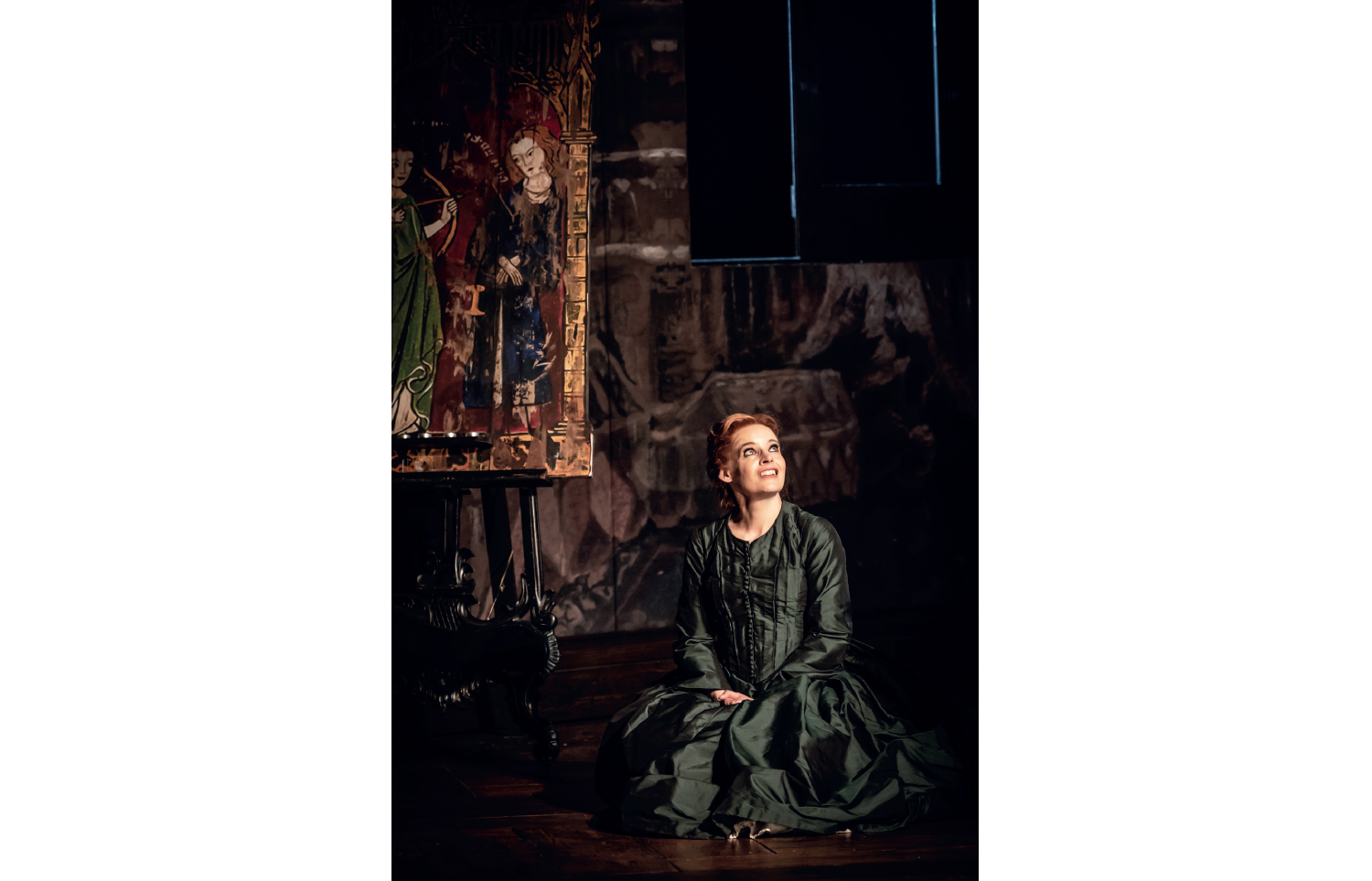There are a lot of corpses on stage at the end of Charles Edwards’s production of Tristan & Isolde for Grange Park Opera. At this stage in the drama, directors tend to fade out the bloodbath, the better to focus on Isolde’s final dissolution into bliss. But as Michael Tanner argues, Tristan, like the Ring, offers no bearable solution to its central problem, however much the music – that great deceiver – might try to persuade us otherwise. You want art to tell you the truth? Wagner knew that you can’t handle the truth. He declared that in Tristan ‘from the first to the last, love shall for once find utter fulfilment’. So it does, and the result is carnage.
So yes, here’s to the corpses, and to many other aspects of this attractive staging. Unsubsidised companies such as Grange Park Opera depend on ticket sales and their audiences expect something that looks decent: no sniggering subversion or jumble-sale costumes here. Edwards has done his own designs. Backdrops from historic Tristan productions dating back to 1865 adorn the drawing room of a Victorian mansion where Isolde (Rachel Nicholls) is dressed in a crinoline by a fussing Brangäne (Christine Rice) while Tristan (Gwyn Hughes Jones), Kurwenal (David Stout) and the boys strut about in 19th-century military uniforms. Ominously, the programme book features an essay on Wagner’s lover Mathilde Wesendonck and I feared we were about to experience that smuggest of middlebrow gimmicks: opera as commentary on its creator.
She’s throwing off sparks like a roman candle. You’d die for this Isolde
Not so: this was a world with its own dream logic. True, some details of Edwards’s concept were baffling – King Marke (Matthew Rose) enters the scene of the lovers’ betrayal well in advance, and makes himself comfortable on the sofa. Others were just irritating: Kurwenal is a dipsomaniac, while the death-devoted lovers display little overt attraction to each other. But as a study of romanticism spinning out of control – recognisably modern personalities lost in a seductive but lethal fantasy world – it wasn’t low on atmosphere. In fact, Edwards draws the characters with a febrile intensity (think Ken Russell meets Merchant Ivory) heightened by some impassioned singing from an intensely committed cast.
Nicholls, in particular, was magnetic. Her Isolde is a flame-haired spitfire: glowering wide-eyed from the shadows, bouncing up and down with girlish excitement as she awaits her lover, and not afraid to subordinate vocal opulence to dramatic truth – though when she did open out in full ecstasy the sound was practically incandescent. More importantly, Nicholls is a terrific actor and I’ve never seen her give a dull or self-conscious performance. Her last-minute appearance in Longborough’s Die tote Stadt last year supercharged the whole show and now, at West Horsley, she’s throwing off sparks like a roman candle. You’d die for this Isolde; but then, she wouldn’t give you much choice.
Gwyn Hughes Jones’s Tristan, by contrast, is the rock against which Isolde crashes; initially impassive before breaking and falling. His agony in Act Three had a more than usually savage edge – as well it might, confronted with the vocal majesty of Rose’s King Marke. Rose filled his few lines with such sonorous dignity and such aching, wounded despair that you truly felt (and this isn’t always the case in Tristan & Isolde) the devastation that had been wrought on the world of day by the lovers’ dreams of eternal night. Again: carnage. It was conducted by Stephen Barlow, who drew shining sounds from the resident Gascoigne Orchestra without digging particularly deep. Since Wagner once half-joked that a perfect performance of Tristan would drive audiences mad, that was probably just as well.
Sullivan’s writing shimmered and blushed with all the feather-light delicacy of French ballet music
The Orchestra of the Age of Enlightenment ended its season with two concert performances of Gilbert and Sullivan’s Princess Ida, conducted by the finest living conductor of this repertoire, John Wilson. G&S on period instruments? It’s still relatively unusual, though in France – where they take their patrimoine culturel seriously – Sullivan’s rival and hero Offenbach is regularly presented in this way, with scholars preparing Urtext editions of his operettas and top-class recordings being funded by major cultural charities.
I don’t think this performance was recorded, which – with singers as good as Sophie Bevan (Ida) and Robert Hayward (a titanic King Hildebrand) – felt like a missed opportunity. The chorus was crisp and bright, the audience was full and Simon Butteriss was terrifically tart whether as narrator (a Harry’n’Meghan gag got a minor ovation) or pattering his way through the role of the noxious King Gama. Wilson, meanwhile, handled the score like Escoffier rustling up a soufflé. How much of the snobbery about G&S is down to flaccid orchestral playing? On period instruments Sullivan’s writing shimmered and blushed with all the glinting, feather-light delicacy of French ballet music. Wagner haunts your dreams; this stuff just melts on your tongue. Can’t we have both?






Comments